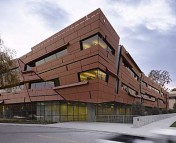If you’re an undergraduate gearing up to apply to graduate schools in the Fall, don’t forget to look into applying for fellowships as well. Although in the US almost all graduate student positions in the physical sciences are funded (your tuition is paid for and you receive a cost-of-living stipend), there are a number of reasons why you should apply for external fellowships, as well. Below we will outline the NSF GRFP, which is perhaps the most prominent of these opportunities.
What is the NSF GRFP?
The National Science Foundation’s Graduate Research Fellowship Program (usually called an NSF) is a fellowship for science graduate students that provides three years of full funding at an accredited institution of your choice. There are numerous benefits to being an NSF fellow:
- The freedom to work with a professor who wouldn’t otherwise be able to support you.
- More time for coursework and research: while on NSF, you can’t be required to teach.
- If you’re on a waiting list for a graduate school you’d really like to attend, bringing three years of your own funding definitely can’t hurt.
- Financial gain: NSF pays more than most graduate programs, and departments may award you an extra bonus as an incentive for bringing in external funding.
- Possibilities to access special research opportunities and a supercomputer.
The application process
The NSF application consists of 3 two-page essays, 3 letters of reference, and your transcripts. The three essays are comprised of: 1) a personal statement about you, your interests and goals, 2) a discussion of your past research and 3) a proposal for a research project or topic you would like to pursue. Your essays will be judged on two primary review criteria: intellectual merit and broader impacts. Briefly, intellectual merit is how well you are prepared academically and the strength of your proposed research project. For an astronomy student, broader impacts essentially boil down to participation in outreach; how have you helped to engage others in science? Broader impacts include how you will encourage participation of under-represented minorities and how you will promote science and learning to both students and the general public.
For more information, see these resources:
- The application materials, including the three essay prompts, from NSF:
https://www.nsfgrfp.org/applicants/application_components - Intellectual merit and broader impacts (the review criteria) from NSF:
https://www.nsfgrfp.org/applicants/application_components/merit_review_criteria
Your application will be reveiwed by 2-3 scientists in your general area of study (but not experts in your subfield — i.e. physics, but perhaps not extragalactic astrophysics) who will judge your application based its intellectual merit and broader impacts. Personal experience has shown that some sort of publication or presentation is very favorably looked on. This could include a poster at a regional conference, participation in an undergraduate research symposium, or a Bachelor’s thesis.
Should I apply for an NSF?
You might now be asking “Should I apply for an NSF?” If you’re eligible, the answer is yes, absolutely. (The eligibility guide can be found here). Here are several common reasons why astronomy students decide not to apply and why you should apply anyways:
- You don’t have a specific project to propose. There are at least several NSF advice essays out there on the internet saying if you don’t have a proposal where you can state the hypothesis you are going to test and the method you will use, don’t bother applying. While this may be true for other disciplines, it is NOT true for astronomy. Instead, you can discuss the current research in a field of astronomy and generally what you could work on. The point is to show that you know enough about a specific sub-field to get started in interesting, result-producing research.
- You don’t know what you want to study in graduate school. It would be very unusual for an undergraduate student to know exactly what they want to do for their Ph.D. thesis before even starting graduate school — the NSF essay is a great way to start thinking about this! Take this opportunity to start discussions with your professors and advisors about what problems in the field interest you.
One key thing to remember is that you don’t have to pursue the research you outline in application: the funding is for you, not for the project you proposed. - You don’t think your broader impacts are sufficient. You don’t need to have started an outreach project to reach children across the country or propose to start one to receive an NSF. Instead, you can talk about mentoring younger students, tutoring, local public outreach you have already done and what outreach you hope to do once you’re in graduate school.
- You aren’t an under-represented minority. That doesn’t matter! You can still participate in outreach events, promote interest in science to the general public or address the broader impact criterion in any other way.
- You don’t think you can win one. Your odds might be better than you think! In 2011, the NSF awarded 2000 fellowships – more than twice what they gave out just a few years ago. Besides, even if you don’t receive a fellowship, you will get feedback on your application from the reviewers that will help you improve other applications as well as your NSF application next year.
Ask for help
Ask your classmates, mentors, and research advisor to read your essays. Discuss research ideas with both your peers and professors. Ask graduate students who have had successful applications in the past for help structuring your essays. If there isn’t anyone at your home institution who has experience with the NSF application, click on the “Find experienced GRFP resource person” links here.
In a future Astrobites post, we’ll talk about our own experiences applying for the NSF GRFP.





Trackbacks/Pingbacks